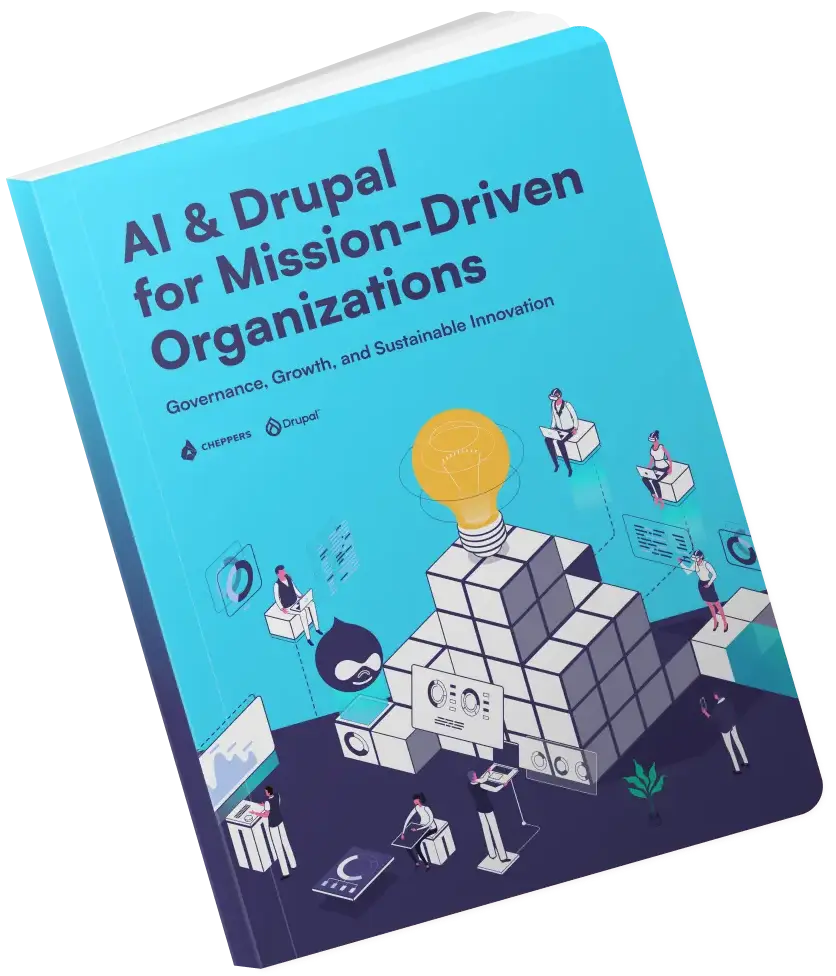Canvas, SDC, and the Future of Drupal
Drupal has always been powerful. That’s why organizations choose it for large, complex websites. But let’s be honest, building and editing pages in Drupal has never been as simple as it could be. Marketing teams often depend on developers for every layout change or new page, and that slows everything down. That’s now starting to change with Drupal Canvas (previously called Experience Builder) and Single Directory Components (SDC). Together, they make Drupal feel modern, visual, and far more approachable for editors.
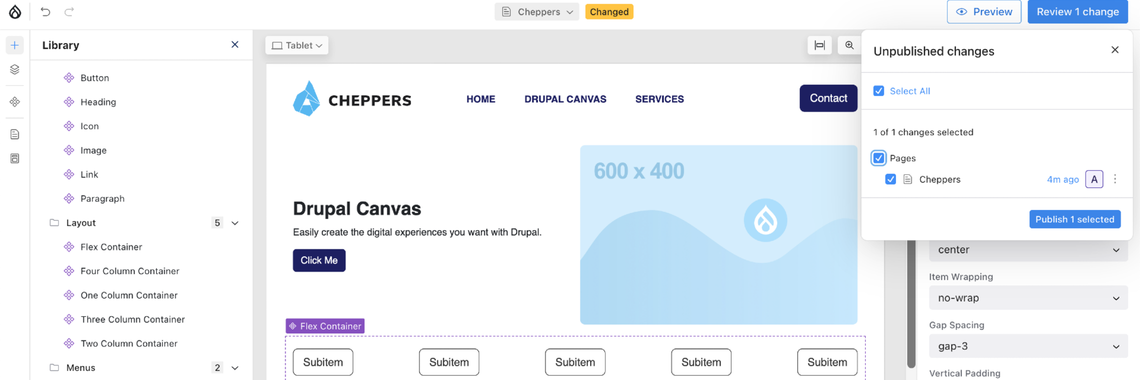
While many teams are still figuring out how to make the two work well together, we’ve already done it. We built an SDC component library that’s fully compatible with Drupal Canvas, giving organizations a working solution from day one instead of starting from scratch.
Making Drupal Easier to Use Without Losing Its Strength
Canvas brings a true drag-and-drop editing experience into Drupal. Editors can move pieces around, build landing pages, and try different layouts without writing code. It gives them the freedom to experiment while still relying on the structure and reliability Drupal is known for.
SDC, on the other hand, changes how front-end developers build those pieces. Instead of scattering templates, styles, and scripts across multiple folders, everything that belongs to a component sits neatly together. It’s faster to work with, easier to maintain, and more consistent.
Canvas makes content creation visual. SDC makes the codebase cleaner and more predictable. Together they create a balance between freedom for editors and stability for developers, but only if they’re set up to work hand in hand.
The Common Roadblock
Many teams quickly discover that Canvas and Single Directory Components don’t connect seamlessly out of the box. To make Canvas truly useful, you need a structured library of components that editors can actually use, and building that library from scratch takes both time and a deep understanding of how Canvas expects to read and display components.
That’s where our experience comes in. We’ve already navigated the technical gaps and built a production-ready component library designed to plug directly into Drupal Canvas. It’s a tested, extensible solutionthat’s ready for teams who want to move beyond experimentation and start building with confidence.
What Makes Our Library Different
Every component in our library was built with both editors and developers in mind. It includes common sections like banners, feature grids, callouts, cards, and testimonials. Each one is designed to look great, meet accessibility standards, and work across all screen sizes.
When editors open Canvas, they can drop these components into layouts and adjust content directly from the sidebar, all without touching code. Developers can easily extend or restyle the components using the same structure, maintaining a unified look and consistent functionality across all sites.
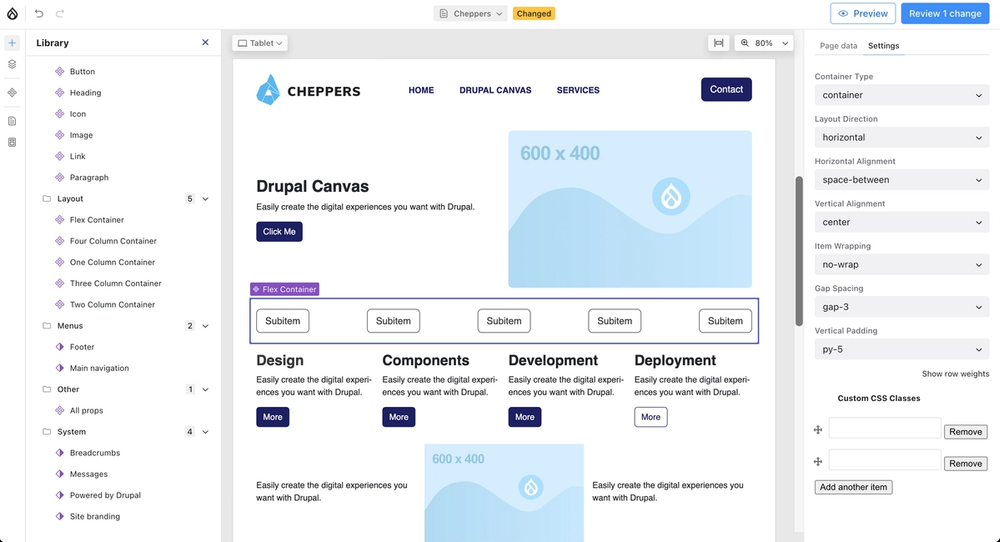
For organizations with more than one site, the library helps keep the brand consistent. Many existing sites already differ in style and need extra attention to bring them in line. The component library makes that possible without starting over.
In short, we’ve combined Drupal’s flexibility with a structured system that helps teams use Canvas in real projects and grow with it confidently.
Why this matters for everyone?
When you give people the right tools, everything changes. Editors can finally focus on what they do best without waiting for developer support. Building a new campaign page or landing page becomes a creative task instead of a technical one.
Consistency improves across the board. Because everyone uses the same set of components, designs stay on brand and accessible. When something needs to be updated, changing a single component automatically updates it everywhere. That alone saves hours of rework and review time.
From a business perspective, this translates to faster turnaround, lower costs, and fewer bottlenecks. Projects that used to take weeks can now move forward in days. Developers spend more time improving the platform instead of responding to layout requests.
The impact becomes clear when you look at how different kinds of organizations are using it:
- In higher education, decentralized departments often manage their own pages. Canvas and our SDC library let them publish independently while keeping a consistent university look and feel.
- For government websites, accessibility and reliability are non-negotiable. Our components are already built to meet WCAG standards, helping agencies publish quickly and confidently.
- Nonprofits and NGOs appreciate the ability to launch campaigns and donation pages without having to hire extra technical help. Smaller teams can still deliver professional results.
- In large enterprises, brand consistency is everything. The SDC library makes it possible for global and regional teams to share the same design system, maintaining visual unity while allowing for local flexibility.
- Even small publishers benefit from the same setup. They get a modern editing experience - simple, visual, and stable, backed by Drupal’s power and scalability.
No matter the industry, the result is the same: faster workflows, cleaner design, and happier teams on both sides of the screen.
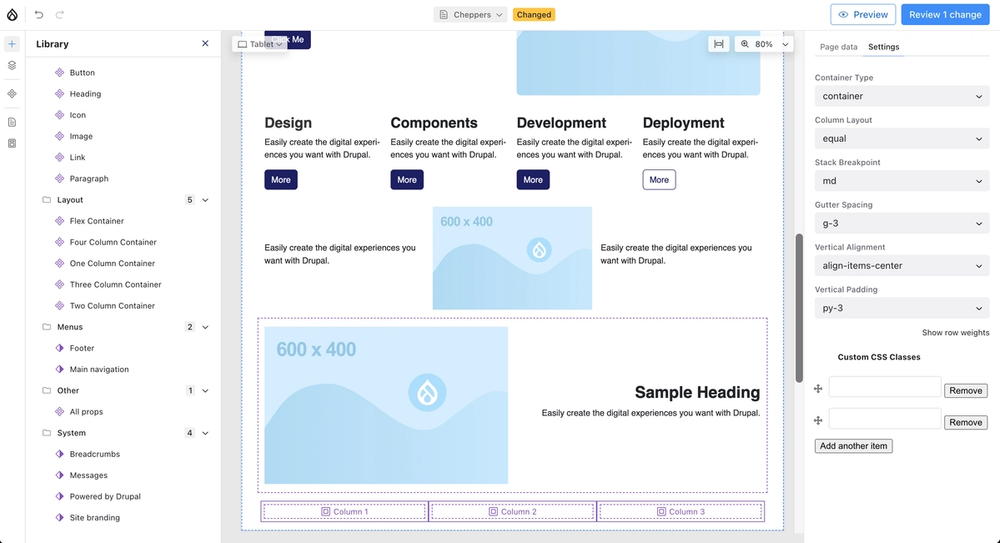
Ready for the Next Chapter?
Drupal is entering a new chapter with Canvas and SDC. Together they signal a shift in how sites are built, maintained, and experienced, not just by end users but by the people who create and manage them every day. What’s ahead is a Drupal that’s faster to build on, easier to edit, and more consistent across teams.
We’ve been studying that shift closely. Our developers have worked through the patterns, the dependencies, and the ways Canvas and SDC fit together. We’ve already built the component foundation that will make them work in real environments. More importantly, we’ve spent time with content teams, helping them understand what this new workflow means in practice and how it changes the way pages are planned, built, and approved.
That combination of technical insight and editorial perspective is where our agency lives. We’re not waiting for Drupal’s next wave to arrive — we’ve been preparing for it. When organizations start looking for guidance on how to make Canvas and SDC part of their strategy, they’ll find we already have the answers, the processes, and the experience to move quickly and confidently.
If you’re thinking about how Drupal is evolving, or what it will take to modernize your current setup, we’d be glad to have that conversation. A discussion about what’s possible, what’s practical, and how to get there before everyone else. Because when the new tools arrive, the teams who’ve prepared for them will be the ones setting the standard.
Ready to see what’s possible with Canvas and SDC? We’re here to talk.
Related posts
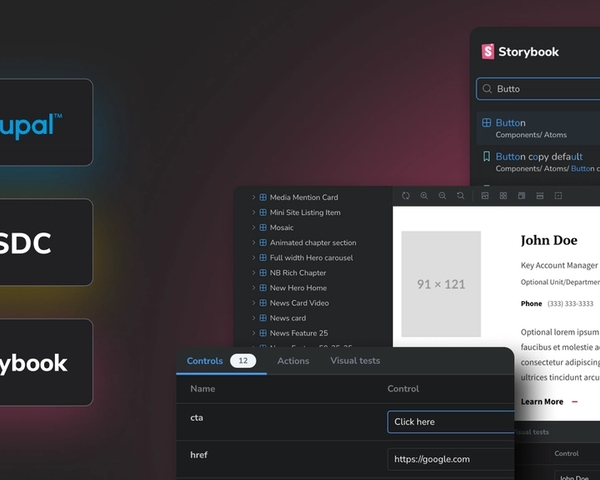
Managing a university’s digital presence is a complex challenge. Between faculty websites, alumni portals, departmental pages, and internal systems, it’s common for a large institution to maintain 50 or more individual sites. Each has unique needs, but all must stay on-brand and deliver a consistent user experience.
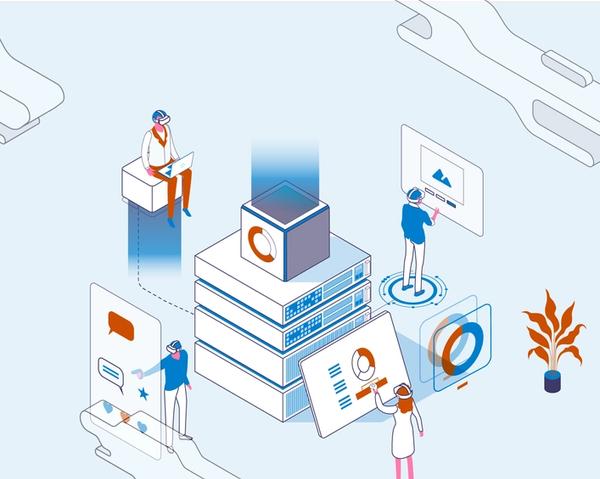
Artificial intelligence has become one of the defining conversations of our time. Some see it as a revolutionary force with limitless potential, while others think it is a looming threat, raising concerns about control, jobs, and trust. For leaders, product teams, editors, and developers, the real question is simpler and more practical: how can AI help people focus on the work that matters while handling the repetitive tasks?

